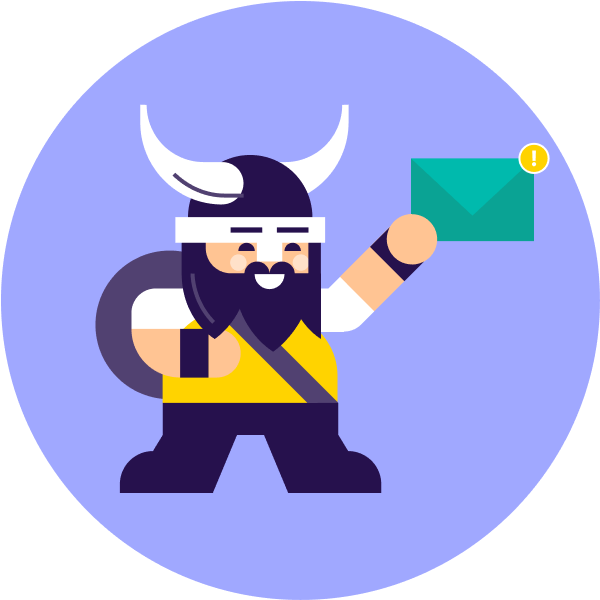The Ultimate ELT Buyer’s Guide
Cut Through the Clutter. Find the Right ELT Solution.
The ELT market is saturated with solutions, both new and old. And that should come as no surprise. As data sources multiply exponentially, and over 80% of enterprise business leaders view data integration as critical for operations, the demand for ELT solutions has created a crowded space.
For buyers, the problem is not a lack of choices. It’s that there are too many of them. How can buyers identify the right solution with so many options to pick from?
We hear this question from our prospects time and time again. All they ever want is a clear, succinct explanation of what to look for in an ELT solution. That’s why we developed this Ultimate ELT Buyer’s Guide. We want buyers to know what to look for in an ELT solution.
All of the points contained in this guide are suggestions. Every company has different priorities. Each use case is unique in its own way. These observations are derived from our own deep experience in the ELT space, but we expect buyers to consider a number of factors when they make a decision.
Whether you’re an enterprise company, or a regular size business, this guide is built for you. Read on to find the right ELT solution!
ETL vs. ELT: Why ELT is the clear choice
For teams still trying to decide between ETL and ELT, each data integration method offers advantages and disadvantages. But for most use cases, ELT is superior. Consider a comparison between the two protocols.
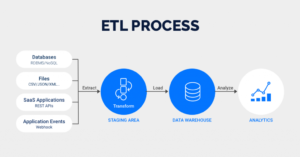
ETL (extract, transform, and load) extracts raw data from sources, transforms the data on a secondary processing server, and then loads the data into a target database. ETL is used when data must be transformed to conform to the standards of a target database.
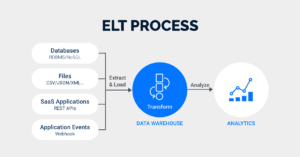
ELT (extract, load, and transform), unlike ETL, does not require data transformations to take place before the loading process. ELT loads raw data directly into a target data warehouse, instead of moving it to a processing server for transformation. The data is transformed inside the cloud data warehouse itself.
By streamlining the data integration process, ELT offers a number of advantages over ETL, including:
- Quicker data ingestion
- Higher data volume
- Faster scalability
That’s why, unless a buyer is dealing with legacy architecture, we recommend going with an ELT solution.
What to look for in an ELT Solution?
1. Full Data Orchestration
ELT solutions worth investing in offer end-to-end automation of the ELT process, or full “data orchestration.” Data orchestration is not just a function of automation. A solution must perform each phase of the ELT process – extract, load, and transform – robustly and efficiently.
When searching for a solution, buyers should break down the ELT phases, and ensure that each step offers the powerful capabilities needed to facilitate effective data orchestration.
Here are some important factors to look for:
Extract
Building data connectors from scratch, or spending significant amounts of time integrating data sources, undercuts seamless data orchestration. That’s why buyers should search for solutions with pre-built, plug-and-play data connectors that allow teams to connect to data sources immediately. Ideally, the solution will also offer a mechanism for easily adding custom data sources.
Load
In order to optimize data orchestration, a solution must harness replication methods such as change data capture (CDC). CDC instantly and automatically syncs source data with a target database. These instantaneous updates, and incremental loading, facilitate automated data transfers.
Transform
Transformation abilities vary widely between solutions. But the platforms with the most advanced offerings ensure that data orchestration workflows can produce fully transformed data. Buyer’s should look for solutions that can automate post-load transformations, with full downstream capabilities, including building dependencies.
These are some of the powerful ELT abilities that facilitate data orchestration. But the best platforms often go a step further by introducing features that are specifically designed to execute data orchestration workflows.
These features, using methods such as logic pipelines, enable teams to automate data workflows – from data ingestion, to SQL-based transformations – without any manual intervention whatsoever.
2. Fully-Managed Solution
ELT can offer tremendous advantages, but only if a solution is fully-managed. So – what does “fully-managed” mean? In essence, fully-managed solutions do not require the customer to perform backend tasks. Fully-managed solutions take care of the backend, so customers only have to interact with the user interface.
Fully-managed ELT solutions offer a number of key advantages, including:
No maintenance
With a fully-managed solution, all backend maintenance tasks are performed by the provider. Customers do not have to worry about fixing data connectors, updating versioning, and other critical maintenance. This saves time and resources, and ensures that teams don’t encounter maintenance bottlenecks that disrupt operations.
Zero coding
By eliminating backend tasks, fully-managed solutions ensure that teams do not have to code anything. The entire solution is managed through the frontend user interface. Teams don’t need data engineers to build and operate data pipelines. Data analysts and other non-technical users can use the solution, too.
Auto-scalable
Fully-managed solutions offer automatic server scalability (auto scalability), which automatically scales server resources up or down, depending on computational requirements. No more dealing with server hassles or misallocation of resources. Also, cut costs by optimizing server computation.
These are just some of the benefits of a fully-managed ELT solution. Fully-managed solutions save time, resources, and funding by taking the maintenance burden off of teams, so they can focus on the tasks that really matter.
3. Connects to Any Data Source Easily
One of the core functions of a data integration platform is to combine data from disparate API sources, such as Facebook Ads, Netsuite, and Salesforce, into a single solution. Buyers should look at ELT solutions that can quickly connect to any data source API, without requiring input from the dev team or technical work.
Many ELT solutions offer pre-built API connectors so that buyers can connect to data sources automatically.
Pre-built data connectors offer several benefits, including:
- Plug-and-play functionality
- Immediate time-to-launch
- Automatic updates each time data source API changes
- No developers required
- Active support channels
Pre-built data connectors eliminate the need to build data connectors manually. With plug-and-play functionality, pre-built API connectors link to data sources immediately. The dev team can focus on more important projects, rather than pipeline construction. All API updates are automatic. Support channels are available.
How a solution handles data source “coverage gaps” is key. Many ELT solutions allow customers to “request” new data connectors, but this does not mean they will be built. Buyers that want full API coverage must seek out features such as API on-demand programs and custom API capabilities.
With an API on-demand program:
- Customers choose a custom data source
- The ELT service builds the corresponding API connector
- The API connector is updated and maintained by the ELT service
On the other hand, with a custom API:
- The ELT service does not have to build a data connector
- Customers simply provide the details of the data source API
- Raw data from the data source API is ingested straight into a cloud data warehouse
ELT solutions that offer all three features – pre-built data connectors, API on-demand service, and a custom API – guarantee simple, seamless universal data source coverage
4. Versatile Data Replication
With data integration platforms, there are typically two possible methods for data replication: batch and streaming.
Here’s a quick reminder of what the two terms mean:
Batch processing collects data in batches, and feeds these batches into a database during predefined time intervals. Batch processing is ideal for very large data sets and deeper data analysis.
Stream processing feeds data into a database as soon as it is generated. Stream processing is ideal for projects that require speed, nimbleness, and real-time decision making.
While each data replication method offers its own pros and cons, a versatile ELT solution allows teams to choose between them. This ensures that teams can calibrate for each specific use case.
These are some key features to keep any eye out for:
Change Data Capture (CDC)
Change data capture uses stream processing to instantly sync a source dataset with a target dataset. CDC updates data points incrementally, as soon as changes happen. CDC can sync a source database with a cloud data warehouse in real-time.
Standard Extraction
Standard extraction differs from CDC in two important ways. First, the method uses batch processing. And second, entire database tables are updated, rather than individual data points.
Multi-Tables
Multi-tables automates batch migrations. The feature automatically migrates relational databases to a cloud data warehouse. This streamlines an otherwise cumbersome batch migration process.
While every team has unique core needs, most will encounter use cases that demand different forms of data replication. With access to both batch and stream processing, teams can use the method that works best for each individual project.
5. Robust Data Transformation Layer
Data transformation is the key transition step for teams that want to generate powerful insights, granular analysis, and game-changing business intelligence. During data transformation, raw source data is prepared, cleaned, and converted into structured data that BI platforms and analytics systems can harness.
In order to produce the best data analysis, teams need an ELT solution with a robust transformation layer. With the ELT paradigm, data is transformed directly inside of a cloud data warehouse, as the last step in the data integration process. ELT solutions can load and transform data simultaneously, supporting more efficient data projects. The paradigm also enables cloud data warehouses to store raw data indefinitely, so teams can transform the data as much as they want.
However, data transformation capabilities vary widely among ELT solutions. While many ELT solutions say they offer post-load transformation capabilities, they often do not provide the capacities necessary to maximize data quality.
Here are some of the transformation features to look for:
- Automated in-database executions of SQL queries
- Looping
- Conditional logic
- Support for building dependencies
- Point-and-click for creating/updating tables
- Variables functionality for making workflows dynamic and generic.
ELT solutions that offer full downstream transformation capabilities give teams total control over their data. Teams can master the transformation phase easily and intuitively, and create the data needed for premier insights.
6. Comprehensive Support & Onboarding
The best ELT solutions all offer comprehensive customer support. From standard troubleshooting, to Customer Solutions team access, to built-in onboarding sessions, the best ELT solutions cover all the bases when it comes to support.
Here are some key factors to look out for:
Free service
Many ELT solutions develop customer support plans based on tiered pricing, but the best guarantee core support at no extra cost. Customers should expect a robust baseline support package at no charge.
Unlimited access to Customer Solutions team
Customers should have unlimited access to their Customer Solutions representative, for troubleshooting, questions, and other issues.
Rapid response time
In general, a customer should wait no longer than two hours for a response time for a ticket, or any other inquiry. Check with each ELT solution to see what assurances they offer in terms of response time.
Built-in onboarding sessions
ELT solutions should build onboarding into the customer lifecycle. Stakeholders must learn general platform proficiency, but should also understand how to tackle their specific use cases. Also, follow-up training should be available on an as- needed basis.
Complete documentation
Customers need a full library of documentation for both self- troubleshooting and to stay abreast of the latest developments on the platform.
These are just some of the support options your team should consider while looking for an ELT solution. Of course, the most important support options will depend on particular needs. But this is a good place to start.
7. Consumption-Based Pricing
ELT solutions are priced based on a number of different factors, including number of users, types of features, and data usage. Some pricing plans are transparent. Others involve complex equations. But let’s cut through the noise.
Here’s a breakdown of popular pricing factors buyers will likely encounter:
Number of users
Many ELT solutions charge per number of user accounts on the platform. This might be justifiable if team members are using the solution constantly. But when user accounts sit idle, the cost inefficiencies quickly rise.
Data connectors
ELT solutions might charge teams for active data connectors. Under this pricing structure, teams are essentially forced to purchase basic functionality. There’s no reason to entertain this, since plenty of other solutions don’t charge for essential infrastructure.
Feature packages
Several ELT solutions offer platform features based on pricing tiers. However, this typically forces teams to pay for features that they do not use, or locks them out of platforms capabilities.
Data consumption
An increasing number of ELT solutions are charging teams for data consumption. Under this model, teams pay for data throughput, and generally not for platform features.
Pricing models based exclusively on data consumption allow teams to get the most bang for their buck. This ensures that teams pay only for the data they use, rather than for the platform itself.
With consumption-based pricing, the platform becomes a conduit, not a cost center. Pricing is directly correlated with how much value the team is actually deriving from an ELT platform.
This is What You Should Look For. Now Make an Informed Decision!
This guide is designed to provide buyers with the information they need to make an informed purchase. With our many years of experience in the ELT space, we’ve seen what works and what doesn’t. This is the knowledge we can share with the community.
But every team, and use case, is different. Buyers should use this guide at their discretion as they search for a new ELT solution. To learn more about specific ELT providers, visit one of these third-party sites to read objective reviews from real users:
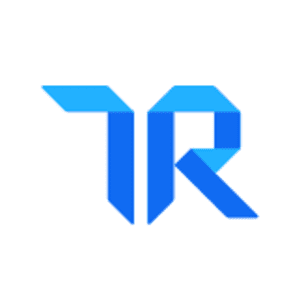
Consider confirmed reviews from end-users,
implementers, consultants, business stakeholders, and decision-makers.
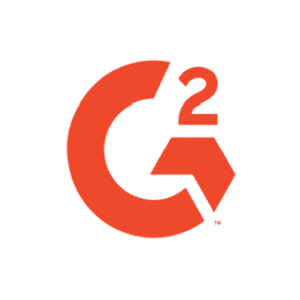

See validated user reviews and independent research
across hundreds of software categories.
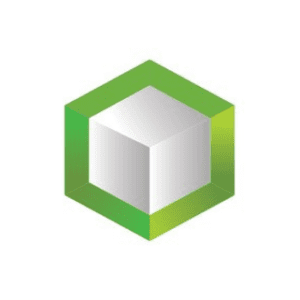
View aggregated high-level user sentiment about the
client-vendor relationship and product effectiveness.
Now you’re on your way to finding the right ELT solution!
